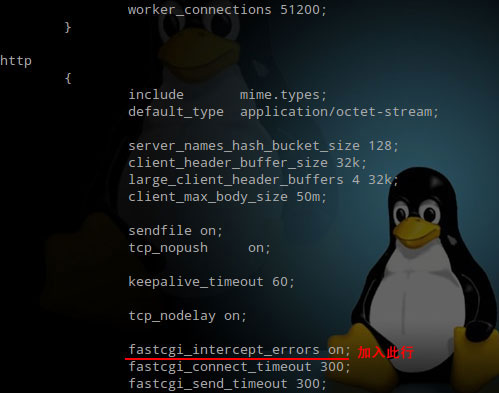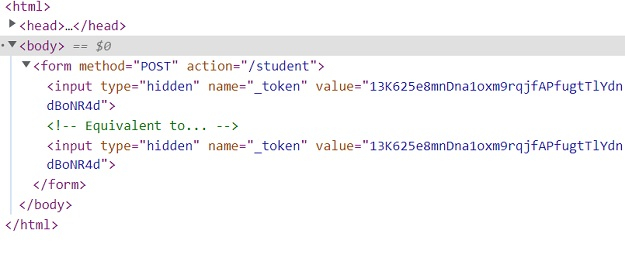This tutorial is about how to implement asynchronous and synchronous requests in AJAX. We know that the FormData type and event listening interface require AJAX to implement. So is there a way to only request the server when the page data changes? What about dynamically replacing the data displayed on the page with new data while preventing the page from refreshing? Today let’s talk about the concept of AJAX.
XMLHttpRequest object
XMLHttpRequest is just a JavaScript object, to be precise, it is a constructor. In other words, it is not mysterious at all, the only thing special about it is that it is provided by the client (i.e. the browser) (rather than being native to JavaScript), and besides that, it has properties, methods, and needs Instantiating through the new keyword, we only need to master them;
XMLHttpRequest to obtain data
We know that AJAX is used to obtain data in the project by preventing page refresh, then Where does the data come from? How do we know how to obtain this data? The answer is that we usually use APIs to interact with various databases.
"API" is the abbreviation of "Application Programming Interface" (ie: Application Programming Interface). You can imagine that some data is open and waiting to be used, and the way we obtain this data is to use the API . The usual form of an API is a URL, and provides specified parameter names and parameter values to help you locate the data you want to obtain.
XMLHttpRequest to prepare the request
To interact with the server, you first need to think about the following questions:
Do we want to obtain data or store data? ——The request method is "GET" or "POST". Where to send the request? ——That is, the corresponding API address. How to wait for the response? - There are two options: "synchronous" and "asynchronous"
The .open() method of the XMLHttpRequest instance is used to answer the above three questions. The .open() method receives three parameters: request method, request URL address and a Boolean value of whether it is an asynchronous request.
The following is an example of calling the .open() method:
// This code will initiate a GET synchronous request for "example.php".
xhr.open("get", "example.php", false)
// "DELETE", "HEAD", "OPTONS", "PUT" can also be used as open( ) first parameter of the method.
In the above code, synchronization is achieved by passing the third parameter as false. It should be noted that once set to synchronous, the send() method will block until the request is completed.
(3) Synchronous requests and asynchronous requests
People usually think that AJAX is asynchronous, but in fact it is not. AJAX is a technology to avoid refreshing the page after getting the data. As for waiting for the server Whether the response method is synchronous or asynchronous requires developers to configure it based on business needs (although it is usually asynchronous).
You may be curious, when do we need to use synchronous AJAX? From my personal experience, it seems difficult to find the corresponding scene.
Finally, let’s briefly explain the difference between “synchronous” waiting for a response and “asynchronous” waiting for a response: “Synchronous” means that once the request is sent, any subsequent JavaScript code will not be executed, while “asynchronous” means When the request is issued, subsequent JavaScript code will continue to execute. When the request is successful, the corresponding callback function will be called.
XMLHttpRequest Level 2 FormData Type
The W3C has proposed the XMLHttpRequest Level 2 specification. Although not all browsers have implemented the content stipulated in the specification, there are still some contents that are all or Implemented by most browsers.
FormData type
FormData is a new data type (constructor) provided by XMLHttpRequest level 2. Remember how to disguise a POST requestSubmit for a form? FormData makes this process easier because the XHR2 object recognizes that the data type passed in is an instance of FormData and automatically configures the appropriate header information.
How to disguise a POST request as a form submission?
When using the POST method to submit form data in this sequence, the "Content-Type" request header must be set to this value.
xhr.setRequestHeader('Content-Type','application/x-www-form-urlencoded');
Note: This is not a required value when using form, because this is Default method.
FormData is used as follows:
// 添加数据
let data1 = new FormData()
data1.append("name", "Tom")
xhr.send(data1)
// 提取表单数据
let data2 = new FormData(document.forms[0])
xhr.send(data2)In addition, another benefit of FormData is that compared to traditional AJAX requests, it allows us to upload binary data (images, videos, audio wait).
Browser compatibility of FormData.
Desktop IE 10+ and other browsers are supported
Mobile Android, Firefox Mobile, OperaMobile are supported, other browsers are unknown
XMLHttpRequest level 2 event monitoring interface
The first version of XMLHttpRequest can only specify a callback function for the onreadystatechange event. The event responds to all situations.
The second version of XMLHttpRequest allows specifying callback functions for more events.
onloadstart Request issued
onprogress Sending and loading data
onabort The request was aborted, for example, the user called the abort() method
onerror Request failed
onload The request is completed successfully
ontimeout The time limit specified by the user has expired and the request has not been completed.
onloadend The request is completed, regardless of the result or failure
I believe you have mastered the methods after reading these cases. For more exciting information, please pay attention to other related articles on the php Chinese website!
Related reading:
Summary of the front-end js framework and explanation of its uses
How to solve the problem of ajax unit when parsing json data In the form of seconds
The implementation steps of js and servlet to implement file upload in h5
The above is the detailed content of How to implement asynchronous synchronous requests in AJAX. For more information, please follow other related articles on the PHP Chinese website!
 Scrapy基于Ajax异步加载实现方法Jun 22, 2023 pm 11:09 PM
Scrapy基于Ajax异步加载实现方法Jun 22, 2023 pm 11:09 PMScrapy是一个开源的Python爬虫框架,它可以快速高效地从网站上获取数据。然而,很多网站采用了Ajax异步加载技术,使得Scrapy无法直接获取数据。本文将介绍基于Ajax异步加载的Scrapy实现方法。一、Ajax异步加载原理Ajax异步加载:在传统的页面加载方式中,浏览器发送请求到服务器后,必须等待服务器返回响应并将页面全部加载完毕才能进行下一步操
 如何使用CakePHP中的AJAX?Jun 04, 2023 pm 08:01 PM
如何使用CakePHP中的AJAX?Jun 04, 2023 pm 08:01 PM作为一种基于MVC模式的PHP框架,CakePHP已成为许多Web开发人员的首选。它的结构简单,易于扩展,而其中的AJAX技术更是让开发变得更加高效。在本文中,将介绍如何使用CakePHP中的AJAX。什么是AJAX?在介绍如何在CakePHP中使用AJAX之前,我们先来了解一下什么是AJAX。AJAX是“异步JavaScript和XML”的缩写,是指一种在
 jquery ajax报错403怎么办Nov 30, 2022 am 10:09 AM
jquery ajax报错403怎么办Nov 30, 2022 am 10:09 AMjquery ajax报错403是因为前端和服务器的域名不同而触发了防盗链机制,其解决办法:1、打开相应的代码文件;2、通过“public CorsFilter corsFilter() {...}”方法设置允许的域即可。
 ajax传递中文乱码怎么办Nov 15, 2023 am 10:42 AM
ajax传递中文乱码怎么办Nov 15, 2023 am 10:42 AMajax传递中文乱码的解决办法:1、设置统一的编码方式;2、服务器端编码;3、客户端解码;4、设置HTTP响应头;5、使用JSON格式。详细介绍:1、设置统一的编码方式,确保服务器端和客户端使用相同的编码方式,通常情况下,UTF-8是一种常用的编码方式,因为它可以支持多种语言和字符集;2、服务器端编码,在服务器端,确保将中文数据以正确的编码方式进行编码,再传递给客户端等等。
 Nginx中404页面怎么配置及AJAX请求返回404页面May 26, 2023 pm 09:47 PM
Nginx中404页面怎么配置及AJAX请求返回404页面May 26, 2023 pm 09:47 PM404页面基础配置404错误是www网站访问容易出现的错误。最常见的出错提示:404notfound。404错误页的设置对网站seo有很大的影响,而设置不当,比如直接转跳主页等,会被搜索引擎降权拔毛。404页面的目的应该是告诉用户:你所请求的页面是不存在的,同时引导用户浏览网站其他页面而不是关掉窗口离去。搜索引擎通过http状态码来识别网页的状态。当搜索引擎获得了一个错误链接时,网站应该返回404状态码,告诉搜索引擎放弃对该链接的索引。而如果返回200或302状态码,搜索引擎就会为该链接建立索引
 什么是ajax重构Jul 01, 2022 pm 05:12 PM
什么是ajax重构Jul 01, 2022 pm 05:12 PMajax重构指的是在不改变软件现有功能的基础上,通过调整程序代码改善软件的质量、性能,使其程序的设计模式和架构更合理,提高软件的扩展性和维护性;Ajax的实现主要依赖于XMLHttpRequest对象,由于该对象的实例在处理事件完成后就会被销毁,所以在需要调用它的时候就要重新构建。
 在Laravel中如何通过Ajax请求传递CSRF令牌?Sep 10, 2023 pm 03:09 PM
在Laravel中如何通过Ajax请求传递CSRF令牌?Sep 10, 2023 pm 03:09 PMCSRF代表跨站请求伪造。CSRF是未经授权的用户冒充授权执行的恶意活动。Laravel通过为每个活动用户会话生成csrf令牌来保护此类恶意活动。令牌存储在用户的会话中。如果会话发生变化,它总是会重新生成,因此每个会话都会验证令牌,以确保授权用户正在执行任何任务。以下是访问csrf_token的示例。生成csrf令牌您可以通过两种方式获取令牌。通过使用$request→session()→token()直接使用csrf_token()方法示例<?phpnamespaceApp\Http\C
 使用HTML5文件上传与AJAX和jQuerySep 13, 2023 am 10:09 AM
使用HTML5文件上传与AJAX和jQuerySep 13, 2023 am 10:09 AM当提交表单时,捕获提交过程并尝试运行以下代码片段来上传文件-//File1varmyFile=document.getElementById('fileBox').files[0];varreader=newFileReader();reader.readAsText(file,'UTF-8');reader.onload=myFunc;functionmyFunc(event){ varres


Hot AI Tools

Undresser.AI Undress
AI-powered app for creating realistic nude photos

AI Clothes Remover
Online AI tool for removing clothes from photos.

Undress AI Tool
Undress images for free

Clothoff.io
AI clothes remover

AI Hentai Generator
Generate AI Hentai for free.

Hot Article

Hot Tools

Safe Exam Browser
Safe Exam Browser is a secure browser environment for taking online exams securely. This software turns any computer into a secure workstation. It controls access to any utility and prevents students from using unauthorized resources.

SublimeText3 Linux new version
SublimeText3 Linux latest version

VSCode Windows 64-bit Download
A free and powerful IDE editor launched by Microsoft

Atom editor mac version download
The most popular open source editor

SublimeText3 Mac version
God-level code editing software (SublimeText3)






